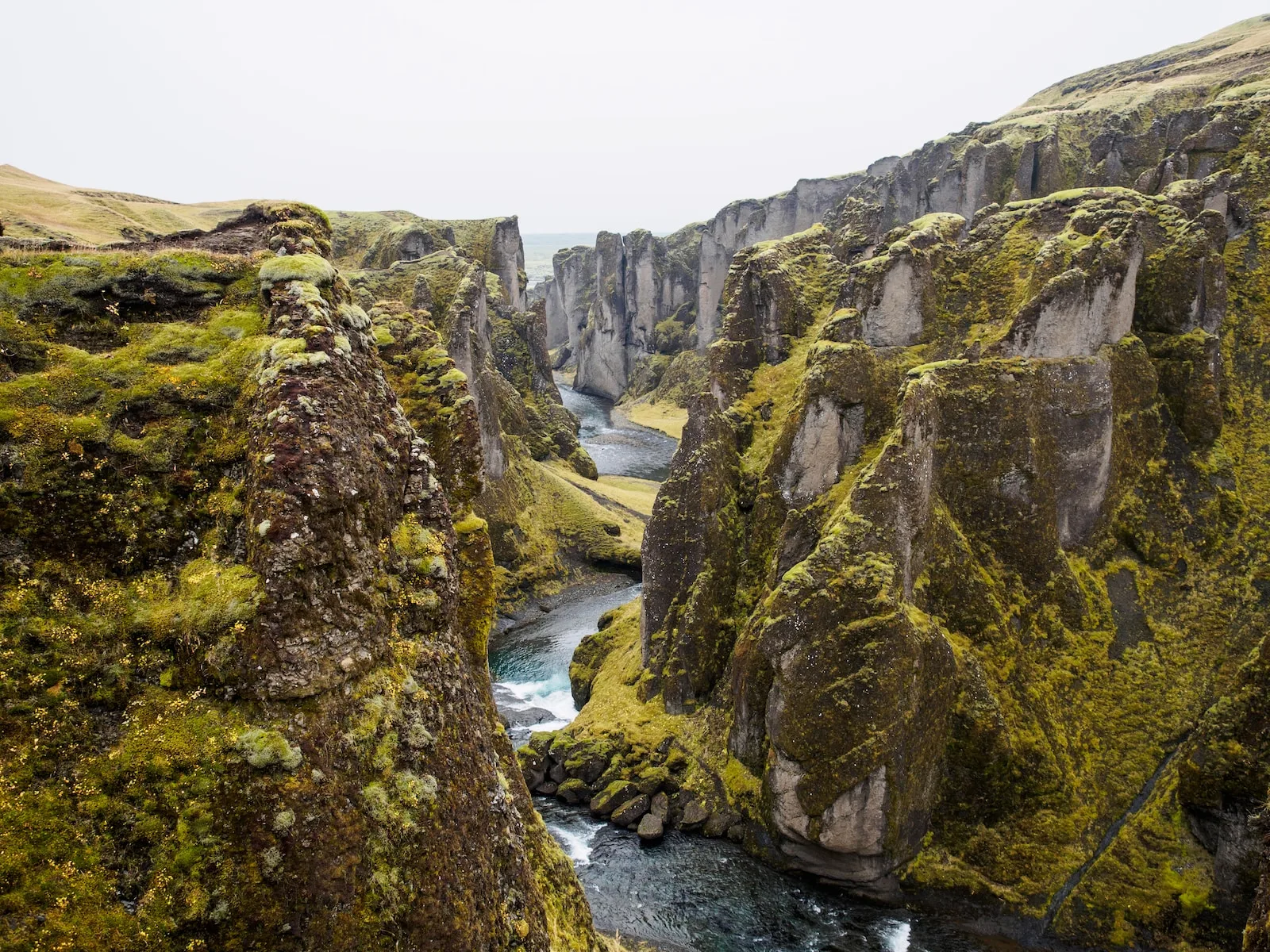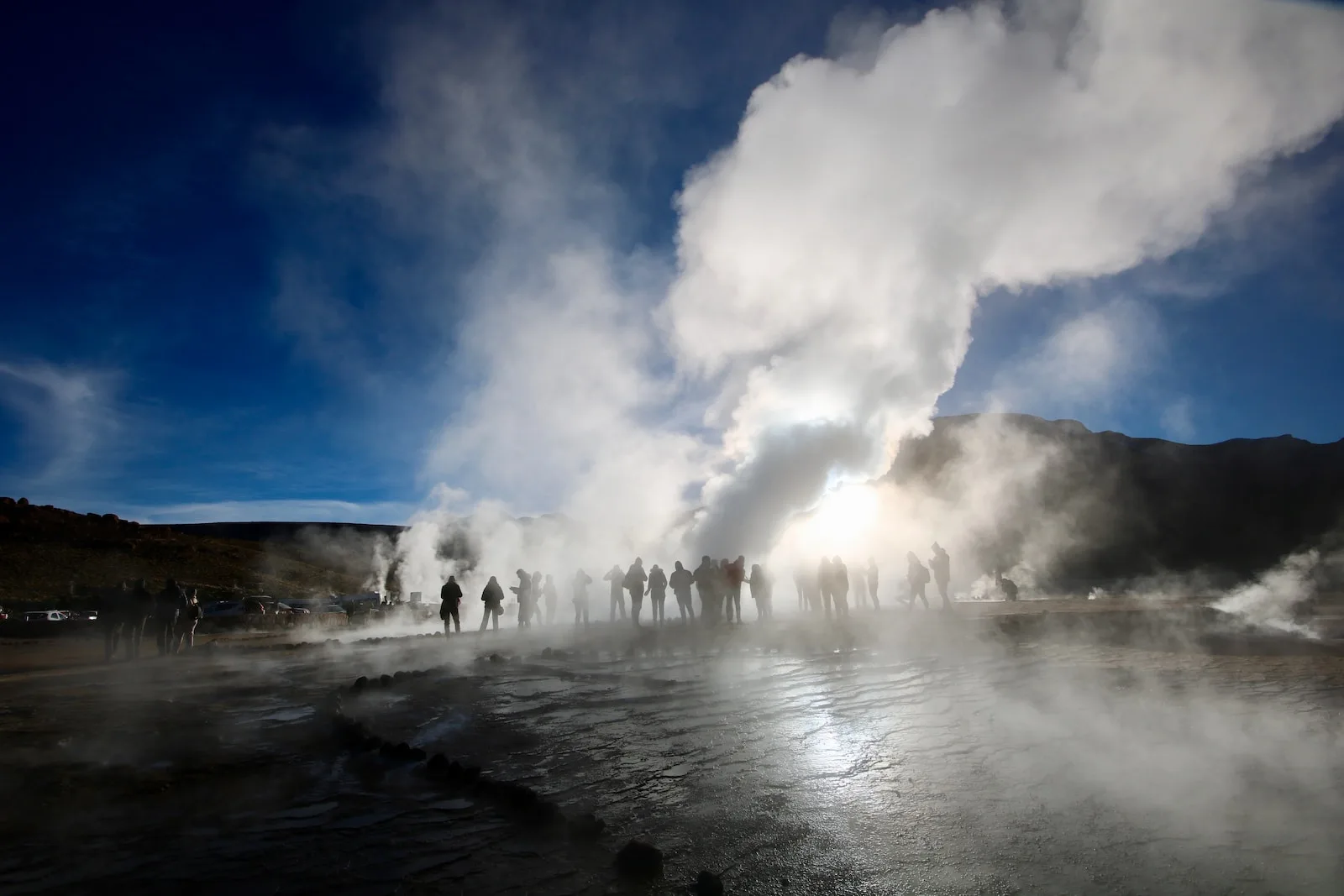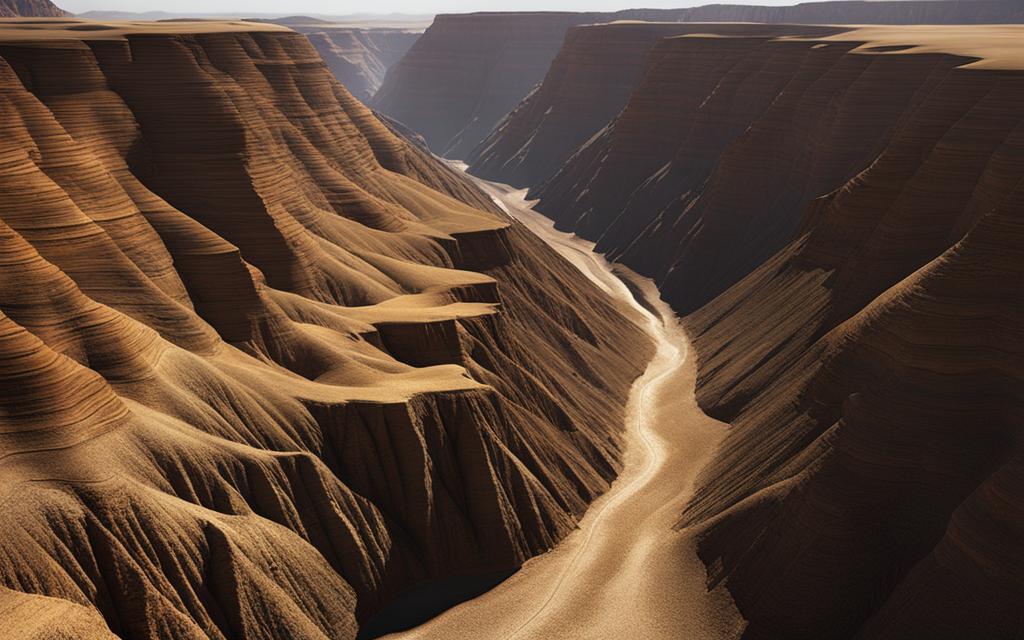Introduction
When exploring the wonders of nature, we often encounter breathtaking landscapes that captivate our senses and leave us in awe. Two such natural formations that often leave us perplexed are gorges and ravines.
These terms are frequently used interchangeably, but they actually refer to distinct geological features. Understanding the difference between a gorge and a ravine is not just a matter of semantics; it can greatly enhance our appreciation of the diverse beauty found in nature.
Definition of a Gorge
A gorge is a geological formation characterized by its deep, narrow valley with steep sides. Picture yourself standing at the edge of a precipice, looking down into an abyss that seems to stretch endlessly.
That breathtaking sight you envision is most likely a gorge. Gorges typically form through millennia of erosive forces shaping the earth’s surface, aided by tectonic activity that causes landmasses to uplift or subside.
These imposing natural features often host majestic rivers flowing through their depths, sculpting intricate networks over time. The Grand Canyon in the United States and Verdon Gorge in France are prime examples of gorges whose sheer scale and awe-inspiring grandeur have enthralled countless adventurers.
Definition of a Ravine
Ravines, on the other hand, offer a different type of beauty altogether. Ravines are smaller valleys with relatively shallow depths compared to gorges, but they share similarities in their steep sides creating an enclosed setting. They typically form as a result of water erosion wearing away softer rocks or sediment layers while leaving more resistant materials behind.
Imagine exploring dense woodlands and stumbling upon an enchanting hidden gem—a secluded pathway leading down into nature’s secret sanctuary—this is likely what you’ve discovered: a ravine. Rattlesnake Ravine in Ohio and Royal Natal National Park in South Africa exemplify the charm of ravines, with their lush vegetation, trickling streams, and serene ambiance.
Importance of Understanding the Difference
Although gorges and ravines share some similarities in their physical appearances, grasping the distinctions between these geological formations is vital for several reasons. Firstly, it allows us to accurately describe and communicate the awe-inspiring landscapes we encounter.
Proper terminology enhances our ability to convey to others the grandeur of a majestic gorge or the hidden allure of a ravine. Furthermore, understanding these differences helps us appreciate the varying processes that shape our planet’s topography.
Each formation has its own unique story rooted in geological forces acting over vast periods. By discerning whether we are observing a gorge or a ravine, we can delve deeper into unraveling Earth’s incredible history.
Gorge: Nature’s Grand Canyon
Overview of gorges as deep, narrow valleys
When you think of a gorge, what comes to mind? Perhaps an awe-inspiring landscape with towering cliffs and a meandering river carving its way through the earth.
Gorges are indeed nature’s grand canyons, characterized by their deep and narrow valleys. These magnificent formations captivate us with their sheer size and rugged beauty.
Gorges typically form over millions of years through a combination of geological processes. One primary factor is erosion, where wind, water, or ice gradually wear away the surrounding rock layers.
As rivers flow through regions with resistant rock formations, they erode the softer materials around them more rapidly. This continuous erosive action results in the formation of deep channels that eventually become gorges.
Formation through geological processes such as erosion and tectonic activity
Geological forces also play a significant role in shaping gorges. Tectonic activity, such as the movements of Earth’s crustal plates or the uplifting of mountain ranges, can create ideal conditions for gorge formation. These processes cause immense pressure on rocks and lead to fractures or faults in the Earth’s crust.
Over time, these fractures act as pathways for rivers to cut deeper into the landscape, widening and deepening the valleys they flow through. This combination of tectonic activity and erosive forces creates breathtaking gorges that leave us humbled by nature’s power.
Famous examples like the Grand Canyon and the Verdon Gorge in France
When it comes to famous gorges around the world, two stand out among all others – The Grand Canyon in Arizona, USA and The Verdon Gorge in France. The Grand Canyon is nothing short of an icon representing natural marvels.
Carved by millions of years’ worth of the Colorado River’s flowing water, it stretches an impressive 277 miles long, up to 18 miles wide, and plunges over a mile deep. Its vibrant layers of sedimentary rock tell a story spanning billions of years, offering visitors a glimpse into the Earth’s ancient past.
On the other side of the Atlantic lies another magnificent spectacle – The Verdon Gorge. Located in southeastern France, this gorge boasts stunning turquoise-green waters that cut through limestone cliffs towering hundreds of meters high.
Often referred to as “Europe’s Grand Canyon,” it is a beloved destination for adventurers and nature enthusiasts seeking breathtaking views and exhilarating activities like rock climbing and kayaking. These famous gorges bring to life the extraordinary beauty and geological significance that defines these natural wonders.
Ravine: Nature’s Hidden Gem
Description of ravines as smaller, shallower valleys with steep sides: When you stumble upon a ravine during a hike or an adventurous exploration, you can’t help but marvel at its beauty and mystery. Ravines are like hidden treasures nestled amidst nature’s vast canvas. These geological wonders are characterized by their smaller size compared to gorges, but don’t let their size fool you – they still pack a punch in terms of stunning scenery and awe-inspiring features.
Ravines typically appear as narrow valleys with steep sides that have been carved out over time by the forces of water erosion and occasional land subsidence. Picture this: imagine a river or stream flowing patiently through the land, slowly eroding away the earth’s surface in its path.
As it happens, sometimes chunks of land suddenly sink downwards due to various factors like underground water flows or soil instability. This combination of erosion and subsidence creates these remarkable natural formations known as ravines.
Creation through water erosion and land subsidence: Water plays a crucial role in shaping ravines into their distinct form. Over time, rivers and streams incessantly wear away at the surrounding earth, carving out narrow channels that become deeper with each passing year.
The relentless force of flowing water sculpts the landscape, shaping the valley walls into precipitous cliffs that make your heart skip a beat just by looking at them. In addition to water erosion, another intriguing factor contributing to the formation of ravines is land subsidence.
This occurs when sections of land sink downward due to various natural processes beneath the surface. It could be caused by factors such as underground streams shifting course, soil saturation leading to instability or even seismic activity in some cases.
Examples like Rattlesnake Ravine in Ohio and Royal Natal National Park in South Africa
Now that we’ve explored the captivating essence of ravines, let’s dive into a couple of fascinating real-world examples that showcase their beauty and allure. Rattlesnake Ravine in Ohio: This enchanting ravine is tucked away in Hocking Hills State Park, Ohio.
As you venture into its depths, you’ll be greeted by towering cliffs, verdant foliage, and a tranquil stream winding its way through the valley floor. The rugged beauty of Rattlesnake Ravine has captivated hikers and nature enthusiasts for years, offering an immersive experience amidst nature’s breathtaking wonders.
Royal Natal National Park in South Africa: Situated in the Drakensberg Mountains, this national park boasts stunning views of the Tugela Falls—one of the highest waterfalls worldwide—and also features some remarkable ravines. These majestic formations are carved out by countless years of water erosion from rivers flowing down from the mountain peaks.
The ruggedness of these ravines juxtaposed against the scenic landscapes creates an awe-inspiring sight that leaves visitors spellbound. While gorges may steal much of nature’s limelight with their grandeur and scale, ravines offer a more intimate encounter with Earth’s geologic wonders.
Their smaller size doesn’t diminish their impact – rather, it allows for exploration on a more personal level. So next time you find yourself embarking on an outdoor adventure or simply appreciating nature’s creations from afar, keep your eyes peeled for those hidden gems called ravines!
Geological Factors that Distinguish Gorges from Ravines
Depth: Gorges vs. Ravines
When it comes to depth, gorges reign supreme over ravines, plunging to incredible depths of hundreds or even thousands of feet. The formation of gorges is a slow and patient process that takes place over thousands or even millions of years. These majestic geological wonders are typically carved out by powerful rivers that relentlessly erode the surrounding bedrock, gradually deepening the valley. As time passes, these persistent waters cut through layers upon layers of rock, sculpting a breathtaking chasm that leaves us in awe. On the other hand, ravines are relatively shallow compared to their grander counterparts. While they still possess their own charm and beauty, ravines owe their shallowness to shorter formation periods. Unlike gorges which require eons to reach their staggering depths, ravines can form within decades or centuries. This relatively rapid creation can be attributed to factors such as water erosion from heavy rainfall or land subsidence caused by geological shifts.
Width: Gorges vs. Ravines
If we were to measure the width of gorges and ravines on a scale, gorges would undoubtedly take the crown for being wider. These natural wonders can span several miles across and often boast vast expanses that can leave observers breathless with wonderment. Their larger scale allows them to accommodate mighty rivers flowing through their depths. In contrast, ravines tend to be narrower and more confined in size. They may wind through landscapes like slender ribbons carved into the Earth’s surface by restless streams or creeks. While they may not command the same grandeur as expansive gorges do, ravines have an enchanting intimacy about them – cozy alcoves where nature whispers its secrets.
Shape: V-shaped Gorges vs U-shaped or Irregular Ravines
One of the most visually striking distinctions between gorges and ravines lies in their shape. Gorges often exhibit a classic V-shape, characterized by steep sides that converge into a narrow valley floor.
The formation of this V-shape is primarily driven by the forceful flow of rivers over time. As these rivers carve through solid bedrock, their relentless currents create a vertical erosion pattern that sculpts the characteristic V-shape we associate with gorges.
Ravines, on the other hand, tend to possess a U-shaped or irregular contour. This variation in shape arises from different processes at play.
While water erosion still plays a role in shaping ravines, it typically occurs at a slower pace compared to the forces shaping gorges. Additionally, landslides can contribute to the formation of ravines, altering their contours and leading to irregular shapes that lend them a distinct charm.
Understanding the geological factors that distinguish gorges from ravines provides us with insight into how these natural phenomena came to be and why they possess unique characteristics. The depth, width, and shape disparities between these two wonders of nature serve as evidence of Earth’s ever-changing landscapes and remind us of the immense power and beauty forged over countless eons.
Ecological Differences between Gorges and Ravines
Unique Ecosystems:
Gorges and ravines each harbor distinct ecosystems due to their differences in depth, width, and shape. The diverse microclimates within gorges provide habitats for a wide range of flora and fauna. The steep cliffs of gorges create niches for specialized plant species that can cling to the rock surfaces, such as mosses, lichens, and ferns.
These plants not only add beauty to the landscape but also play a crucial role in preventing soil erosion. Ravines, on the other hand, offer habitats for smaller organisms that prefer more stable slopes.
Their shallower depth allows more sunlight to reach the forest floor, supporting an abundance of understory vegetation like wildflowers and shrubs. These plant communities attract various insects and birds that rely on them for food and shelter.
Water Flow Dynamics:
The flow patterns of water differ significantly between gorges and ravines. In gorges, the fast-moving currents of rivers often carve deep channels through bedrock over time. This creates ideal conditions for aquatic life such as fish species adapted to turbulent waters.
Gorge ecosystems may also support unique riparian vegetation along riverbanks. Ravines generally have slower-moving water flow due to their narrower dimensions.
Streams wind gently through these valleys, creating calm pools where amphibians like frogs and salamanders thrive. The slower pace of water movement allows sedimentation, contributing to rich soil composition that sustains a diversity of plant life along the ravine’s banks.
Conclusion
Understanding the difference between a gorge and a ravine not only enhances our geographical knowledge but also reveals fascinating ecological variations within these natural formations. Gorges, with their grandeur and depth, provide unique habitats for specialized plant species, while ravines offer a more intimate environment that supports vibrant understory vegetation and diverse wildlife. By appreciating the geological factors that distinguish gorges from ravines, we can better comprehend the interconnectedness of landscapes and their impact on ecosystems.
So next time you find yourself exploring an awe-inspiring gorge or stumbling upon a hidden ravine, take a moment to marvel at the ecological wonders that these natural features hold. Let them serve as reminders of the remarkable diversity nature has to offer and inspire us to preserve and cherish these incredible environments.
 Skip to main content
Skip to main content


